If you’re thinking about introducing a dog into your home but you’re not fully sure what breed will best suit you and your family, you’ve come to the right place!
There’s no denying that dogs really are man’s best friend, and bringing a furry best friend into your life will most certainly bring more happiness than difficulty. That being said, it is still very important to understand all there is to know about a particular breed before you take the lunge because not all dogs will suit everyone.
So, let’s get straight into it; ever heard of a Labradoodle dog? If a family-friendly fur baby is what you’re after, look no further!
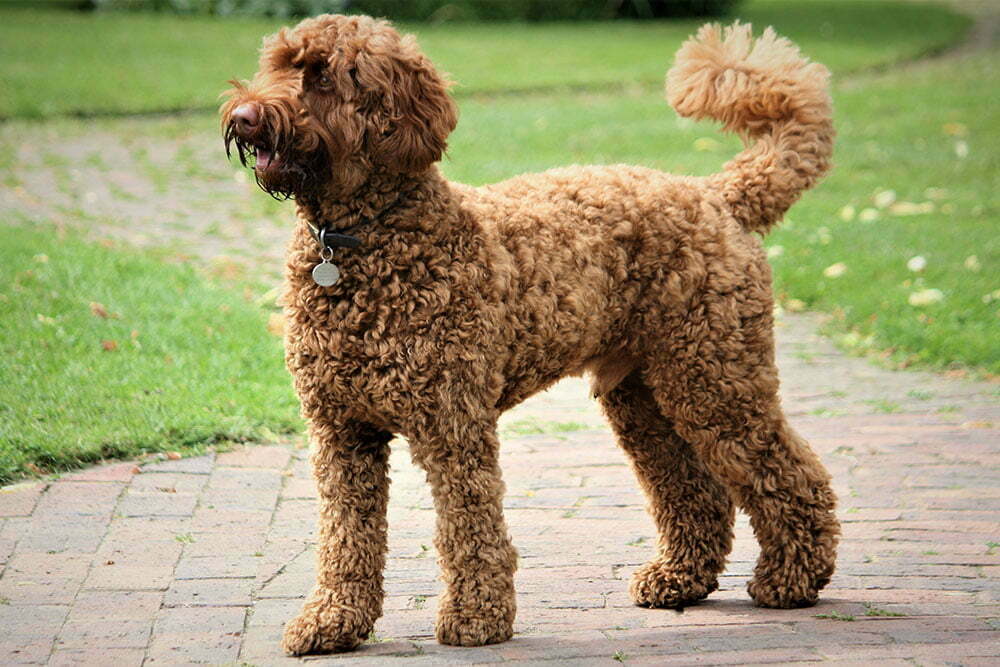
No, this isn’t a made-up name; it is just one of the hundred hybrid breeds that have risen in popularity in the last 15 years or so.
Hybrid breeds can be the perfect dogs because they feature all the best bits of different breeds. The Labradoodle is certainly a positive result of mixed breeding.
It’s a mix between a Labrador Retriever and a Poodle. So, if you’re looking for a dog that is friendly and playful but intelligent and sheds very little, this is the dog for you!
But before you rush to find your nearest Labradoodle puppy, there are a few things you need to know first. While temperament and physical attributes are important when choosing a dog, other important factors can seriously affect you and your dog’s life.
After all, getting a dog is a huge commitment, so you must be completely prepared before diving in! This article will tell you everything you need to know about Labradoodle dogs!
What is a Labradoodle?
So, let’s begin with the basics; what exactly is a Labradoodle? In recent years this mixed breed has become incredibly popular. A super cute Labradoodle puppy will have one Labrador Retriever parent and one Poodle parent.
Let’s take a look at the parent breeds to get an understanding of what to expect from a Labradoodle.
Labrador Retriever
The Labrador Retriever is the most popular dog breed in the world! They’re the perfect family pet: they’re super cute, easy to train, and have a lovely temperament – what more could you ask of your furry friend?
Due to their popularity, they are more often referred to as simply Labradors. In fact, they’re so popular you’d only need to say you’ve got a Lab, and people would know what you’re on about.
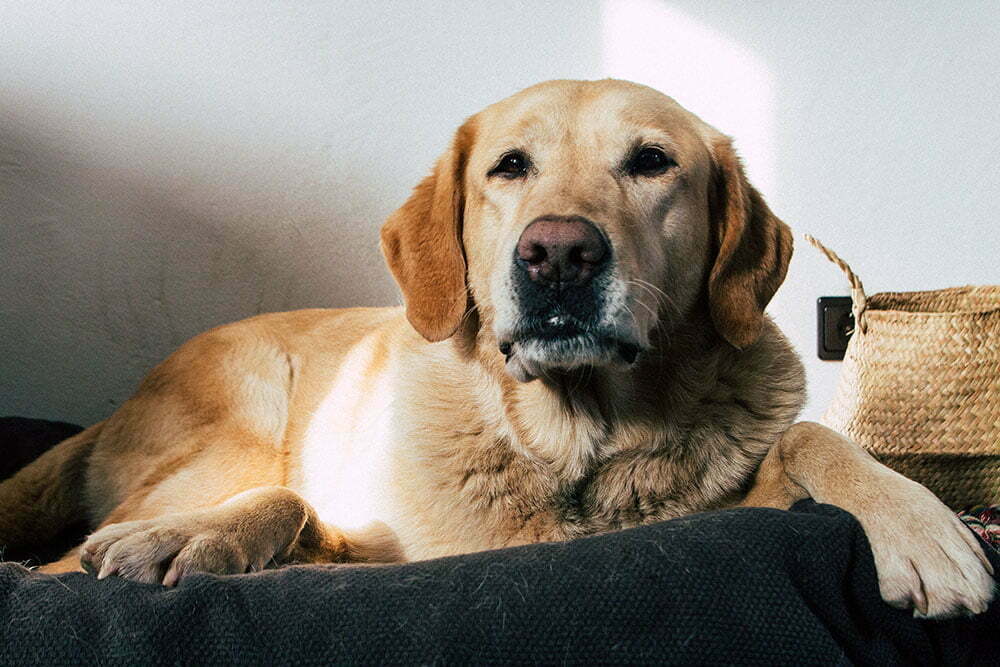
Labradors are medium-sized and can be jet black, golden yellow, and chocolate brown. They’re very easy to train, but they can be naughty without the proper authority and mental stimulation.
They were originally bred to retrieve prey when people went hunting, so they’re naturally very energetic and active dogs. These dogs love a good game of fetch, and their short fur coat means they’re also great at swimming.
They’re also naturally friendly dogs which is why they are so perfect as family pets and are generally good with children. They’re also super smart and are used as service dogs, such as therapy dogs.
Poodle (Standard, Miniature, or Toy)
The Poodle is another popular breed but less so for being a typical family pet, but for its success as a best-in-show winner. They are most well-known for their fluffy hairdos and proud and elegant attitude.
Their size can vary greatly depending on the type of Poodle. Poodles can be standard, miniature, and toy.
Standard Poodles are large dogs, miniature Poodles are medium-sized, and toy Poodles are small dogs.
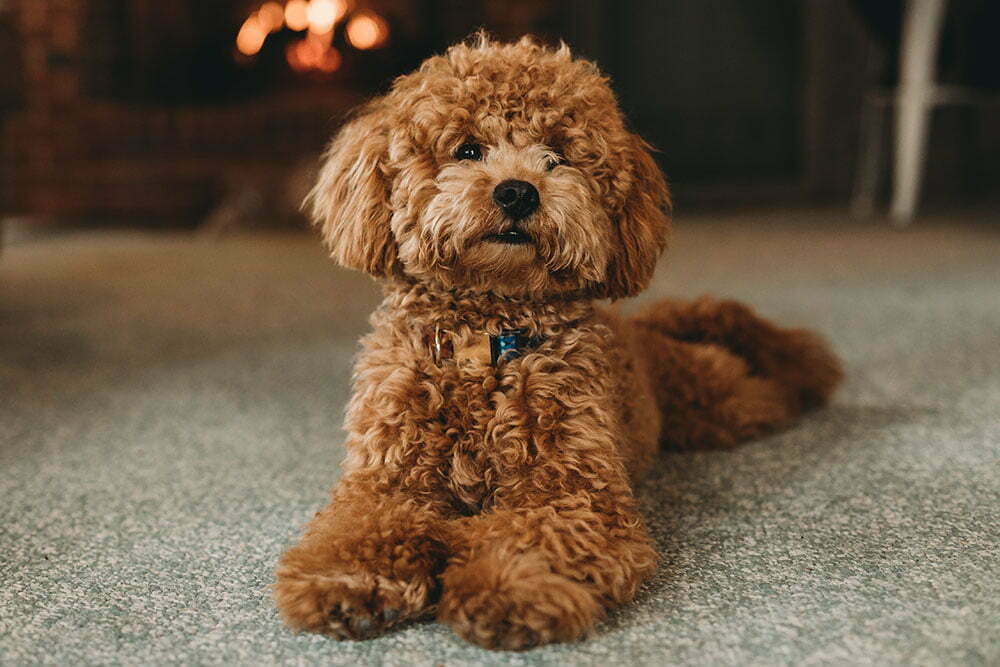
They’re coat is well known for its tight curls and ‘poofy’ style. In terms of color, Poodle’s fur can vary greatly and can be anything from creamy white to golden brown to chocolate brown to jet black and everything in between.
Their fur is also hypoallergenic and sheds very little, which is great for those that suffer from allergies.
Poodles have high intelligence levels, making them very easy to train, hence why people picture Poodles showing dogs and blue ribbons. In fact, they’re one of the most intelligent dog breeds in the world.
The only downside to this is if they aren’t regularly mentally and physically stimulated, they can become destructive. But, under the right circumstances, Poodles are calm and very affectionate dogs and love the family environment.
Physical traits of a Labradoodle dog
Labradoodles can vary greatly in terms of size depending on the size of the Poodle parent. There are three types of poodles: standard, miniature, and toy.
A standard Labradoodle will have one Labrador Retriever parent and one standard Poodle parent. This dog would likely grow to be around 21-24 inches in size.
A miniature Labradoodle will have one Labrador Retriever parent and one miniature Poodle parent. This dog would likely grow to be around 17-20 inches in size.
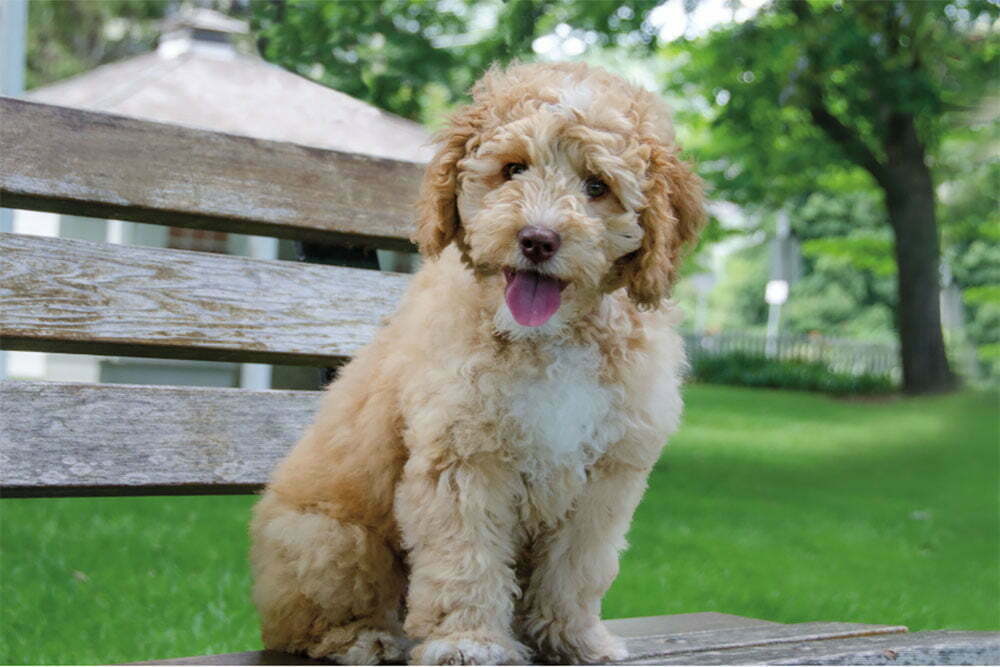
A toy Labradoodle will have one Labrador Retriever parent and one toy Poodle parent. This dog would likely grow to be around 14-16 inches in size.
The average weight of a Labradoodle will depend on the size of the Poodle parent, but, on average, their weight will fall between 7-29 kg.
Their fur coat comes in quite a wide variety of textures and colors, but generally, they will have either tight curls or loose, longer curls. In terms of color, Labradoodles can range from creamy white, golden brown, chocolate brown, and jet black.
They tend to stand quite proud but have a very smiley face, with bright, expressive wide-set eyes. Depending on what traits from either parent they inherit, they can be strong and muscular dogs.
Personality traits of a Labradoodle dog
Labradoodles are the perfect combination of elegant and proud from the Poodle side and playful and outgoing from the Labrador Retriever side.
You can always expect a Labradoodle to greet you with their tail wagging, bright, excited eyes, and a very playful attitude. They tend to jump a lot when they’re excited, which can be an issue, especially if they are large-sized, but they are brilliant, so this can be trained out of them.
They’re very intelligent and sociable too. Not only that, but they’re great with both solo owners and families with children. They are generally fine with other pets, too. They’re very playful dogs, love to run and play, and are great swimmers and very comfortable in the water.
Health traits of a Labradoodle dog
Fortunately, Labradoodles are pretty healthy dogs, but there are a few health concerns you should be aware of. These include:
Von Willebrand’s disease
Von Willebrand’s disease is a hereditary bleeding disease that is caused by a deficiency of the Von Willebrand protein that creates blood clots and seals broken blood vessels.
Dogs that suffer from the condition can experience excessive bleeding after an injury or spontaneous hemorrhage.
Eye issues
A common eye health problem in Labradoodles is glaucoma which can cause increased pressure on the eyes.
Tissue inflammation or eye issues, among others, commonly cause this. Your dog could suffer from either primary glaucoma or secondary glaucoma.
Primary glaucoma is the result of an eye filtration problem, while secondary glaucoma tends to be the result of the other causes mentioned above.
To spot glaucoma in your Labradoodle, look out for symptoms such as dilated pupils, excessive blinking, and cloudy eyes
Addison Disease
Addison’s disease is a disorder where the dog cannot regulate the production of the hormone cortisol, which prevents them from managing stress effectively.
The disease is inherited by Labradoodles as it is found in both Labrador Retrievers and Poodles.
The irregular production of cortisol results in poor digestion, abnormal heart rate, diarrhea, and high thirst levels, and excessive urination.
If you think your dog is experiencing these symptoms, you should seek advice from your vet.
Ear infections
Nasty ear infections are very common in Labradors and Poodles, so Labradoodles are very likely to suffer from ear-related issues.
Their long, floppy ears keep moisture in, so they require regular cleaning and maintenance to prevent build-up and ear issues like infections.
If your dog suffers from an ear infection, look for discolored ear wax and an abnormal smell.
So, you should maintain a regular cleaning schedule using a veterinary-approved ear-cleaning solution.
Hip and elbow dysplasia
Hip and elbow dysplasia in Labradoodles is a relatively common health problem. The condition relates to when the thigh bone doesn’t correctly fit within the hip joint, which causes the bone to rub over time, causing pain.
Labradoodles are particularly susceptible to elbow dysplasia, resulting in a weak or underdeveloped elbow joint.
The condition is genetic, so it is important that both parents are checked for the condition before breeding.
How long does a Labradoodle dog live?
Labrador Retrievers and Poodles are both breeds that tend to live long, healthy lives, so a typical Labradoodle will live somewhere between 12 and 15 years.
Labradors tend to live between 10 and 12 years, and Poodles live an average of 11 to 15 years, depending on size and other health factors.
Even though standard Labradoodles can be quite large when fully grown, they still tend to live longer than other breeds, despite their size.
There are lots of contributing factors to lifespan, including diet, exercise, pre-existing conditions, and other issues related to old age.
How to take care of a Labradoodle dog
Exercising
Labradoodles are both calm and energetic dogs, sometimes in equal measure. They are playful and excitable like Labrador Retrievers and calm and quiet like Poodles.
That being said, they still require two long walks per day to control their energy levels.
They are also very intelligent dogs that require lots of mental stimulation too. Keeping them mentally occupied will help prevent boredom-induced restlessness and behavioral issues.
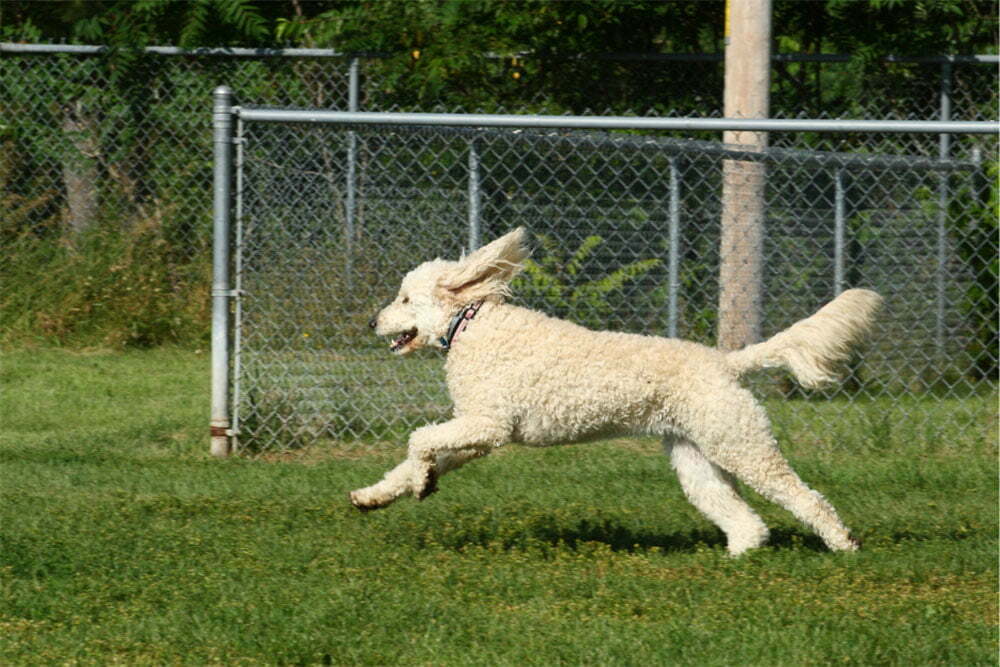
It’s also a good idea to establish a good routine when it comes to exercising your Labradoodle, especially when they’re a young pup. That way will roughly know when they’re going to get a walk next which might reassure them when they start to feel restless.
Like all dogs, as they get older, Labradoodles will require a little less exercise and will be happy to just chill with you at home a lot more, but they will still benefit from moderate exercise every day.
Basically, expect to spend a lot of time outside as the proud owner of one of these energetic pups!
Training
As mentioned, Labradoodles are incredibly clever dogs, so that they can be very easily trained. Labradoodles were originally bred to work as hypoallergenic service dogs, so they can be put to work, and they pick up new tricks and commands very quickly.
They are naturally well-behaved dogs, but like all puppies, Labradoodle puppies will benefit from proper training and socialization to make sure they don’t become aggressive adults.
It’s important to teach them what is expected of them from the moment they enter your home. That way that will be the way things always have been for them rather than trying to get them to change after a few weeks of them settling in.
Even though they seem like cute, tiny balls of fluff, they need to understand the boundaries, and they should respond very well to positive reinforcement and training from the get-go.
Start with the most important things like potty training and basic restraint commands like sit and wait. It’s also a good idea to start crate training immediately and as soon as they have had all their vaccinations, get them socializing with lots of other dogs straight away so they know how to play properly as adults.
Grooming
What’s great about the Labradoodle breed is that they shed very little making them pretty easy to maintain when it comes to grooming.
A Labradoodle’s coat will vary in texture and color, but generally, they will have loose to tight curls that can grow relatively quickly. So, you may find you need to take them to the groomer for a trim every few months or so.
Leaving their coat to overgrow can result in matting which can be painful for your Labradoodle, so it’s best to keep on top of it.
Keeping on top of their hair growth will be so worth it in the long run, and simply giving their coat a good brush once a week will help prevent any knotting and matting.
The average price of a Labradoodle dog
Labradoodles have continued to increase in popularity over the years and as all dog prices have gone up, so has the average price of a Labradoodle.
Their teddy bear looks and playful and super friendly personality makes them the perfect family pet. Plus, their coat is mostly non-shedding and hypoallergenic, so they require minimum grooming and are great for those prone to allergies.
All this has made the demand for Labradoodles extremely high, and the price has skyrocketed as a result.
The average price of a Labradoodle dog is around $2000 but can fluctuate on either side depending on a range of factors such as age, area, and size (standard, miniature, or toy).
While these dogs are incredibly popular, you will still find some end up being put up for adoption, etc., so rescuing a Labradoodle would be a lot less expensive than buying a puppy from a breeder.
Frequently Asked Questions
Are Labradoodles good for first-time owners?
Labradoodles are a good option for first-time dog owners because they are naturally relatively calm and friendly dogs. They’re also incredibly intelligent, so they are very easy to train, which is helpful for those who haven’t trained a dog previously.
They’re great with other pets as well as small children, and they generally tend to fit into a family environment very quickly.
Are Labradoodles hypoallergenic?
Labradoodles have hypoallergenic coats, making them ideal pets for those that suffer from allergies. Their fur is quite fleecy in terms of texture which is great because it sheds very little and is easy to maintain.
Some Labradoodles will be better suited to allergy sufferers than others; it all depends on the type of fur. You can get some with a lot more Labrador than Poodle. For example, suppose the dog has one Labrador parent and one Labradoodle parent. In that case, it will be ¾ Labrador making it more likely to have fur similar to a Labrador, which is not hypoallergenic.
Are Labradoodles good with kids?
Labradoodles are great family pets to have if you live with small children. They quickly become a family member and love playing with kids. They are naturally very gentle dogs, and with the right training and supervision, they can be trusted around children of all ages.
You just need to be careful with the larger-sized Labradoodles, as they could easily accidentally knock over tiny children.
